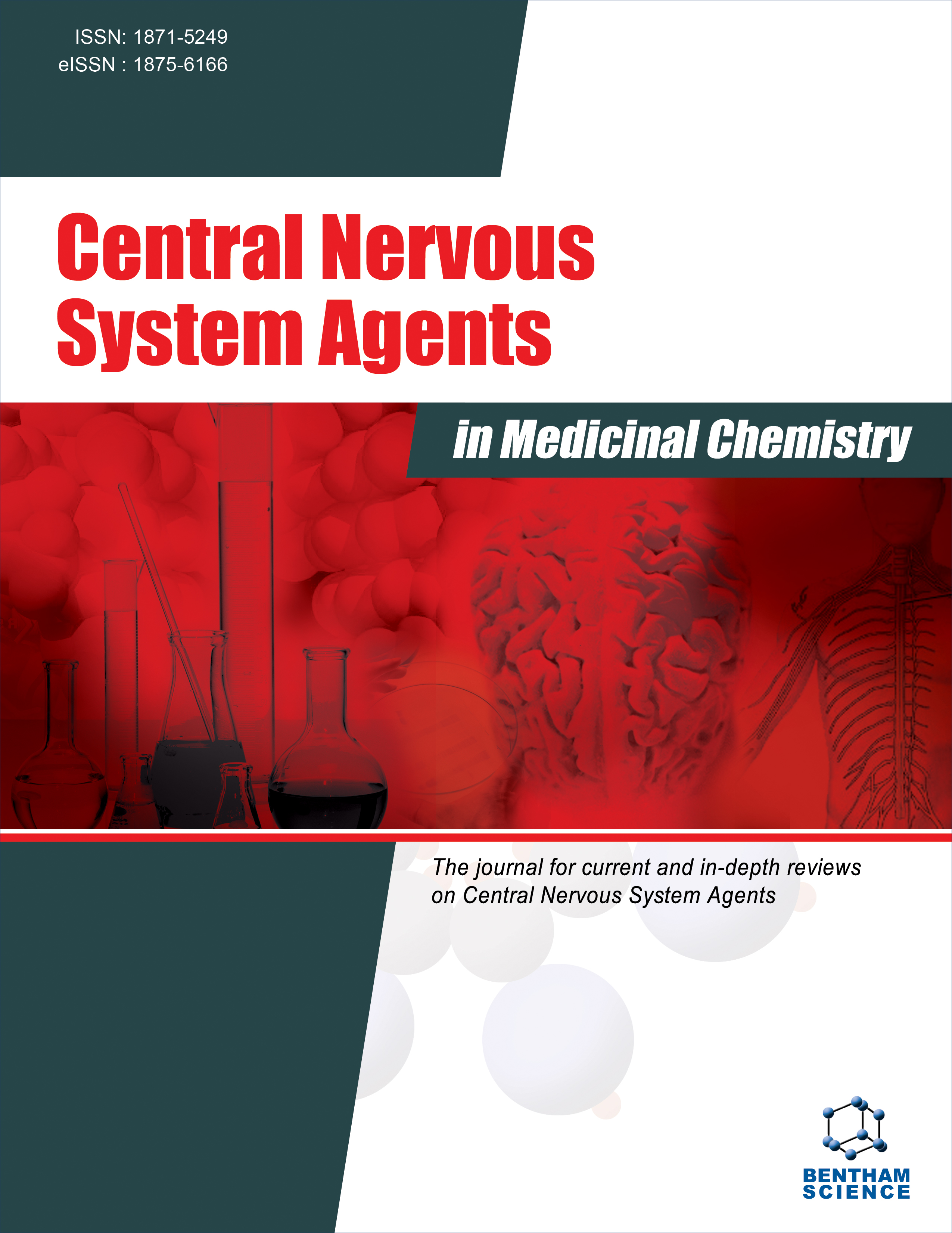- Home
- A-Z Publications
- Central Nervous System Agents in Medicinal Chemistry (Formerly Current Medicinal Chemistry - Central Nervous System Agents)
- Previous Issues
- Volume 14, Issue 2, 2014
Central Nervous System Agents in Medicinal Chemistry (Formerly Current Medicinal Chemistry - Central Nervous System Agents) - Volume 14, Issue 2, 2014
Volume 14, Issue 2, 2014
-
-
Sex Hormones and Brain Dopamine Functions
More LessSex hormones exert differential effects on a variety of sensitive tissues like the reproductive tract, gonads, liver, bone and adipose tissue, among others. In the brain, sex hormones act as neuroactive steroids regulating the function of neuroendocrine diencephalic structures like the hypothalamus. In addition, steroids can exert physiological effects upon cortical, limbic and midbrain structures, influencing different be Read More
-
-
-
Regulation of Dopamine Signaling in the Striatum by Phosphodiesterase Inhibitors: Novel Therapeutics to Treat Neurological and Psychiatric Disorders
More LessAuthors: Andres D. Ramirez and Sean M. SmithAbnormal dopamine neurotransmission has been linked to a wide array of motor, cognitive, and psychiatric disorders. Dopamine binds and regulates intracellular signals through D1-like (D1 and D5) and D2-like (D2, D3, and D4) G-protein coupled receptors. Activation of D1- like receptors stimulates cAMP/PKA signaling via Gs mediated activation of adenylyl cyclase. In contrast, activation of D2-like receptors inhibits cAMP/P Read More
-
-
-
Estradiol, Dopamine and Motivation
More LessAuthors: Katie E. Yoest, Jennifer A. Cummings and Jill B. BeckerThe gonadal hormone estradiol modulates mesolimbic dopamine systems in the female rat. This modulatory effect is thought to be responsible for the observed effects of estradiol on motivated behaviors. Dopamine acting in the nucleus accumbens is thought to be important for the attribution of incentive motivational properties to cues that predict reward delivery, while dopamine in the striatum is associated with the expressio Read More
-
-
-
Novel Histone Deacetylase Inhibitors for the Treatment of Pediatric Brain Tumors
More LessPediatric brain tumors (BT) represent a broad group of malignancies that affect children, displaying different degrees of aggressiveness and prognosis. Current studies demonstrate a crosslink between genetic and epigenetic changes within these tumors. Histone modifications are key elements in the pathogenesis of cancer in general and in brain tumors in particular. It is well documented that at least two classes of en Read More
-
-
-
PET Tracers for Serotonin Receptors and Their Applications
More LessAuthors: J.S. Dileep Kumar and J. John MannSerotonin receptors (5-HTRs) are implicated in the pathophysiology of a variety of neuropsychiatric and neurodegenerative disorders and are also targets for drug therapy. In the CNS, most of these receptors are expressed in high abundance in specific brain regions reflecting their role in brain functions. Quantifying binding to 5-HTRs in vivo may permit assessment of physiologic and pathologic conditions, and monitoring diseas Read More
-
-
-
Plasma Metabolic Profiling of Mild Cognitive Impairment and Alzheimer's Disease Using Liquid Chromatography/Mass Spectrometry
More LessAuthors: Ying Liu, Naijing Li, Ling Zhou, Qing Li and Wei LiObjectives: Alzheimer’s disease (AD) is the main cause of gradual cognitive impairment in elderly individuals. This highlights the need of obtaining biomarkers to identify features that are different among mild cognitive impairment (MCI), AD and cognitively normal (CN) individuals. Design and methods: Ultra-performance liquid chromatography (UPLC)/mass spectrometry (MS) was employed to find the metabolic changes in pla Read More
-
Volumes & issues
-
Volume 25 (2025)
-
Volume 24 (2024)
-
Volume 23 (2023)
-
Volume 22 (2022)
-
Volume 21 (2021)
-
Volume 20 (2020)
-
Volume 19 (2019)
-
Volume 18 (2018)
-
Volume 17 (2017)
-
Volume 16 (2016)
-
Volume 15 (2015)
-
Volume 14 (2014)
-
Volume 13 (2013)
-
Volume 12 (2012)
-
Volume 11 (2011)
-
Volume 10 (2010)
-
Volume 9 (2009)
-
Volume 8 (2008)
-
Volume 7 (2007)
-
Volume 6 (2006)
Most Read This Month
Article
content/journals/cnsamc
Journal
10
5
false
en


